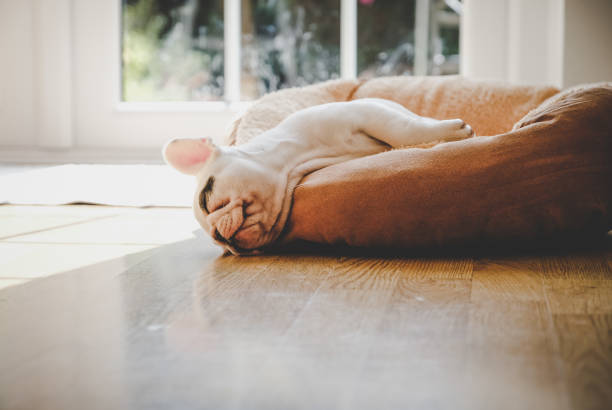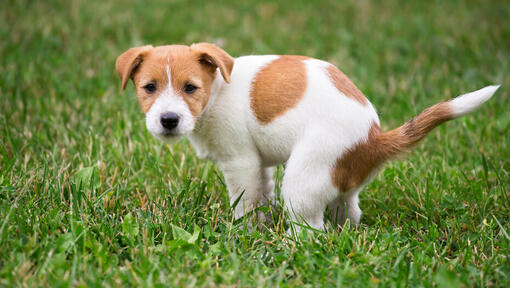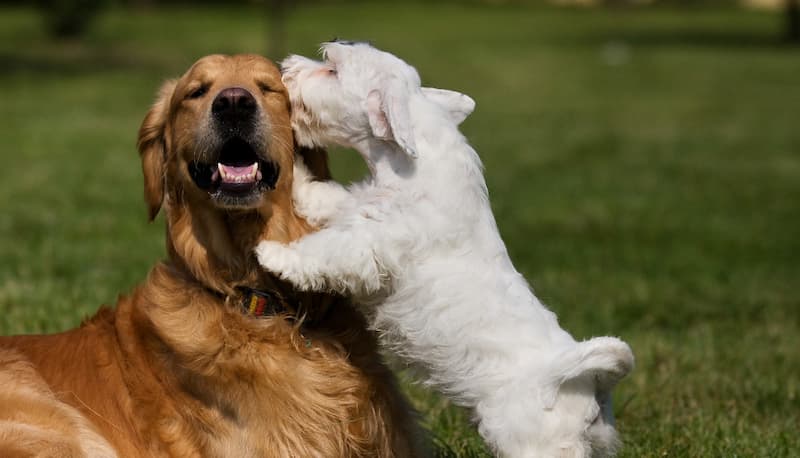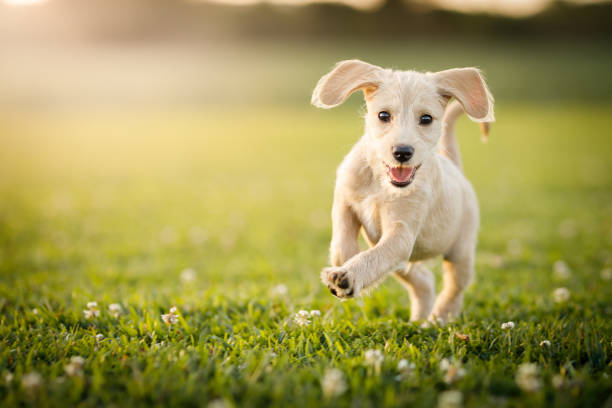Bringing home a new puppy can be an exciting and nerve-wracking experience. The joy of providing a forever home for an adorable puppy can also be met with some hesitancy — you could do something wrong or your property could be damaged by an untrained puppy.
The first 48 hours with your new puppy can be unpredictable and even fretful, but getting through the first few days is the most difficult. After that, you’ll see your new friend settle into everyday life and adjust to their unfamiliar surroundings.
If you really want a puppy, don’t let the potential stress of the first 48 hours stop you from continuing to adopt or purchase a puppy. Staying diligent and being prepared for some of the common early hurdles faced by new dog owners will give you the confidence to overcome them in the first 48 hours.
How Long Does A Puppy Take To Get Used To A New Home?
It usually takes about three weeks for a puppy to adjust to its new home. During this time it is vital that you provide your new puppy with a lot of care, attention, and affection. Similarly, you should establish a routine and start training your puppy as soon as you bring it home, as this will also help your puppy settle into its new home and build security and confidence.
What Should I Do With My Puppy The First 24 Hours?
For the first 24 hours, provide a quiet environment for your new puppy to explore and inspect (under supervision!). . Schedule mealtimes, and bedtimes, and start potty training and crate training. If your puppy wants to, give them plenty of playtime, and of course love and affection.
Tips For Survive The First 48 Hours With A New Puppy
Behavioral & Training
It may be a little harsh at first, but you should commit to training and practicing good behavior from the moment you bring your new puppy home. Your puppy has a habit from the start. So it makes sense to introduce new puppy rules and routines from the first night. In fact, by starting training early on, puppies will feel more secure and build confidence during training.
What’s more, if you adopt your puppy from a reputable breeding company, chances are they’ve already started puppy training at a breeding facility. You just need to keep training and improve according to the dog’s age.
Remember, it’s much easier to create routines and implement good behavior than it is to change bad behavior. Allowing unwanted behavior, or paying special attention to a dog’s bad behavior, does keep them doing it. To discourage bad behavior, say “no” in a high-pitched voice and distract the puppy from unwanted behavior.
Positive Reinforcement & Respect
Of course, you should only use positive reinforcement and never scold your puppy for unwanted behavior. You should enforce rules and good behavior with respect and gentleness. In addition, don’t forget to praise your puppy for being well behaved, paying attention, and eating something nice.
In addition, you should always remember that your puppy is not a toy. Puppies and dogs should be respected. They have their own personalities, and their own desires and each one is unique. You should not force restraints on your puppies or force them to interact with people they don’t like. Instead, invite your puppy to the interaction. If they accept, treat your puppy in a gentle and respectful manner. If they refuse the invitation, their refusal should also be respected.
Don’t Forget Your Own Behavior
Finally, the key to influencing your dog’s behavior is to pay attention to your own behavior and habits. It’s not uncommon for dog owners to reward bad behavior without their knowledge. As a result, the puppies learn that even bad behavior is rewarded, and they continue to do so. Pay close attention to your rewarding behavior, work on controlling your reactions and impulses, and you’ll end up with a well-behaved, well-rounded dog.
Sleeping

The first night with your new puppy can be the most difficult. Rest assured, however, that your puppy will adjust in a few weeks. Now, it might be tempting to take your new puppy to bed for the night. However, we (and most dog behaviorists) strongly advise against this. There’s nothing better than snuggling up to a puppy while you sleep, but it’s a lot harder to get them to stop sleeping in your bed.
Make a Routine and Stick to It
First, develop good sleep habits from the first night. As we mentioned earlier, you should start with training and setting up routines as soon as you bring your new puppy home. Set a time and stick to it. You may want to exhaust your puppy by giving him a little playtime or walking before bed. On the other hand, while puppies do sleep a lot (some can sleep as much as 20 hours a day!), they are likely to ask to go to the bathroom between their nightly naps. Therefore, you should be prepared for some sleepless nights in the first few weeks… Just like you would with a human baby.
Get a Comfortable Bed
Second, before spending the first night with a new puppy, you should have a cozy crate beside your bed or in your bedroom for them. They feel safer and more secure knowing you’re nearby. If you don’t want your dog to sleep in the bedroom in the future, it’s best not to let them stay in the bedroom for the third night. On top of that, you want to put a toy or blanket in the crate that smells like their mother and garbage. This will calm your puppy down.
Finally, be prepared to complain and cry during the first few nights or weeks. Naturally, your new puppy will miss its mother and litter mate, but they will soon settle into their new home. If you complain too much, you can keep your hands in the crate. In addition, your puppies may signal to you that they need to leave, so you may want to take them out for a quick bathroom break.
Many pet parents swear by this snuggling pup because it keeps their new pups quiet, especially at night.
Toilet Training

Puppies are technically babies, and you can expect them to go to the bathroom at least every waking hour. As a general rule of thumb, puppies need to be eliminated after eating, drinking, playing, waking up, and before going to bed at night.
On the first night, bring a new puppy and introduce them to their toilet area. Breeders may provide ingredients that already smell like puppies. You can put it where you want your puppy to go to the bathroom. At first, you may need to pick up the puppy and take it to the bathroom yourself.
Also, keep in mind that it can take months to train your puppy at home. Some puppies learn faster, some more slowly. But that’s perfectly normal! Remember never to punish your puppy for an accident at home because they are still learning how to “use the bathroom.” Always reward your pup with a positive sound and even give them a little treat after they use the toilet.
Feeding & Water
Setting a routine is just as important as mealtimes. Puppies are usually brought home between 6 and 10 weeks of age. During this time, you should feed your puppy three to four times a day. Set a regular meal time for your puppy from the day you bring them home. Usually, it’s easiest to schedule your dog’s meal at the same time as yours. For example, breakfast, lunch, and dinner. When everyone is eating at the same time, it’s also a great time to socialize with family.
Water Intake
While mealtimes are best served at the same time each day, the same logic does not apply to drinking water. Dogs need unlimited water at all times. You can drink water first thing in the morning until an hour or two before bed. Limiting water intake before bed also helps limit your dog’s need to go to the bathroom at night.
On the other hand, sometimes puppies get a little overexcited about a full bowl of water. Some pups find them fun swimming pools, which can create a permanent wet mess on your floor. Other puppies can drink too much at a time, resulting in loose stools or the inability to potty train. To avoid these situations, you can put less water in the bowl and refill it when it’s empty. In addition, you may want to add some water to their snacks or wet food so they can get the necessary hydration, but not over it.
Adjust with Other Pets

In the first 48 hours of owning a puppy, it may make sense to give your new family member a quiet environment away from other pets in the house. Once your new puppy has had a little time to explore and adjust, you can start introducing them to other pets in your family.
If you have an adult dog, make sure they know how to behave around puppies. Calmly introduce them in a safe place. If the adults start to get restless, separate them immediately and wait until both puppies have calmed down before trying again.
If you have a cat, make sure the cat has an escape route from the puppy. Cats can also easily become anxious, so it’s important to give your beloved pet a space to relax.
Conclusion
During the first 48 hours with your new puppy, we recommend staying at home so you can spend as much time as possible bonding with your little buddy. If possible, work from home or take a few days off to help your new puppy adjust to his forever home. Of course, you will both cherish this one-on-one time and intimate experience.





